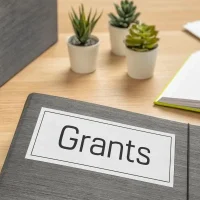The U.S. Ambassadors Fund for Cultural Preservation (AFCP) is a significant initiative established by the U.S. Department of State in 2001. Its primary aim is to support the preservation of cultural heritage around the globe, particularly in countries where the U.S. has diplomatic relations. The fund recognizes that cultural heritage is not only a reflection of a nation’s identity but also a vital component of its social fabric and economic development. By investing in the preservation of cultural sites, artifacts, and traditions, the AFCP seeks to foster mutual understanding and respect among diverse cultures. The AFCP provides financial assistance to projects that safeguard and promote cultural heritage, thereby enhancing the ability of communities to maintain their unique identities. The fund is particularly focused on projects that are sustainable and have a lasting impact on local communities. Through this initiative, the U.S. government demonstrates its commitment to cultural diplomacy, recognizing that cultural preservation can play a crucial role in fostering peace and stability in regions around the world. By supporting these projects, the AFCP not only helps to protect invaluable cultural assets but also encourages collaboration between American diplomats and local communities.
Preserving Cultural Landmarks
Tangible cultural heritage encompasses physical artifacts, structures, and sites that hold historical, artistic, or architectural significance. The AFCP provides funding for a wide range of projects aimed at preserving these tangible elements of culture. Eligible projects may include the restoration of historic buildings, conservation of archaeological sites, and preservation of museum collections.
Community Involvement in Preservation
These initiatives are essential for maintaining the integrity of cultural landmarks that serve as symbols of national pride and identity. One notable aspect of the AFCP’s support for tangible heritage is its emphasis on community involvement. Projects that engage local populations in the preservation process are often prioritized, as they foster a sense of ownership and responsibility towards cultural heritage.
Sustainable Preservation Models
For instance, a project aimed at restoring a centuries-old temple may involve training local artisans in traditional construction techniques, ensuring that skills are passed down through generations. This approach not only preserves the physical structure but also revitalizes traditional craftsmanship, creating a sustainable model for future preservation efforts.
Types of intangible cultural heritage projects eligible for funding
Intangible cultural heritage refers to the practices, representations, expressions, knowledge, and skills that communities recognize as part of their cultural heritage. This includes oral traditions, performing arts, social practices, rituals, and festive events. The AFCP acknowledges the importance of intangible heritage in shaping community identity and cohesion, and thus provides funding for projects that aim to document, revitalize, or promote these living traditions.
Eligible projects may involve recording oral histories from elders in a community, organizing workshops to teach traditional crafts, or supporting festivals that celebrate local customs. For example, a project might focus on reviving traditional dance forms that have fallen out of practice due to modernization. By providing resources for such initiatives, the AFCP helps ensure that these cultural expressions are not only preserved but also adapted to contemporary contexts, allowing them to thrive in an ever-changing world.
Criteria for eligibility and selection process
To be considered for funding from the U.S. Ambassadors Fund for Cultural Preservation, projects must meet specific eligibility criteria. First and foremost, they must demonstrate a clear connection to the preservation of cultural heritage and align with the fund’s mission to promote mutual understanding through cultural diplomacy.
Additionally, projects should be located in countries where the U.S. has diplomatic relations and must involve collaboration with local communities or organizations. The selection process for funding is competitive and involves several stages.
Initially, applicants submit a detailed proposal outlining their project objectives, methodologies, and expected outcomes. Proposals are then reviewed by a panel of experts who assess their feasibility, sustainability, and potential impact on the community. Successful applicants are notified and provided with funding to implement their projects.
Throughout this process, transparency and accountability are emphasized to ensure that funds are used effectively and responsibly.
Over the years, the U.S. Ambassadors Fund for Cultural Preservation has supported numerous successful projects that have made a significant impact on local communities and their cultural heritage. One such project involved the restoration of ancient Buddhist stupas in Afghanistan.
These stupas are not only architectural marvels but also hold immense spiritual significance for local communities. The restoration efforts included training local craftsmen in traditional building techniques, ensuring that the knowledge was preserved alongside the structures themselves. Another noteworthy example is a project in Peru focused on preserving traditional weaving techniques among indigenous communities.
The initiative provided resources for workshops where artisans could learn from master weavers while also documenting their stories and techniques for future generations. This project not only helped sustain an important cultural practice but also empowered local women by providing them with economic opportunities through their craft.
How to apply for funding and tips for a successful application
Understanding the Application Process
Applying for funding from the U.S. Ambassadors Fund for Cultural Preservation (AFCP) requires careful planning and attention to detail. To begin, interested applicants should thoroughly review the eligibility criteria and guidelines provided by the fund. This information is typically available on the official website of the U.S. Department of State or through U.S. embassies in relevant countries.
Preparing a Strong Application
When preparing an application, it is crucial to present a clear and compelling project proposal. This should include a well-defined project scope, objectives, timeline, and budget. Additionally, applicants should emphasize community involvement and demonstrate how their project will have a lasting impact on local cultural heritage. Providing evidence of previous successful initiatives or partnerships can also strengthen an application.
Submission and Review
Moreover, it is advisable to seek feedback from peers or mentors before submitting the proposal. Constructive criticism can help identify potential weaknesses or areas for improvement that may enhance the overall quality of the application. Finally, adhering to submission deadlines and ensuring all required documentation is complete will significantly increase the chances of securing funding from this prestigious program.
The Importance of Cultural Heritage Preservation
In conclusion, the U.S. Ambassadors Fund for Cultural Preservation plays a vital role in safeguarding both tangible and intangible cultural heritage worldwide. By supporting diverse projects that engage local communities and promote sustainable practices, the fund not only preserves invaluable cultural assets but also fosters international collaboration and understanding. As more individuals and organizations recognize the importance of cultural heritage preservation, initiatives like the AFCP will continue to be essential in ensuring that these legacies endure for future generations.









































